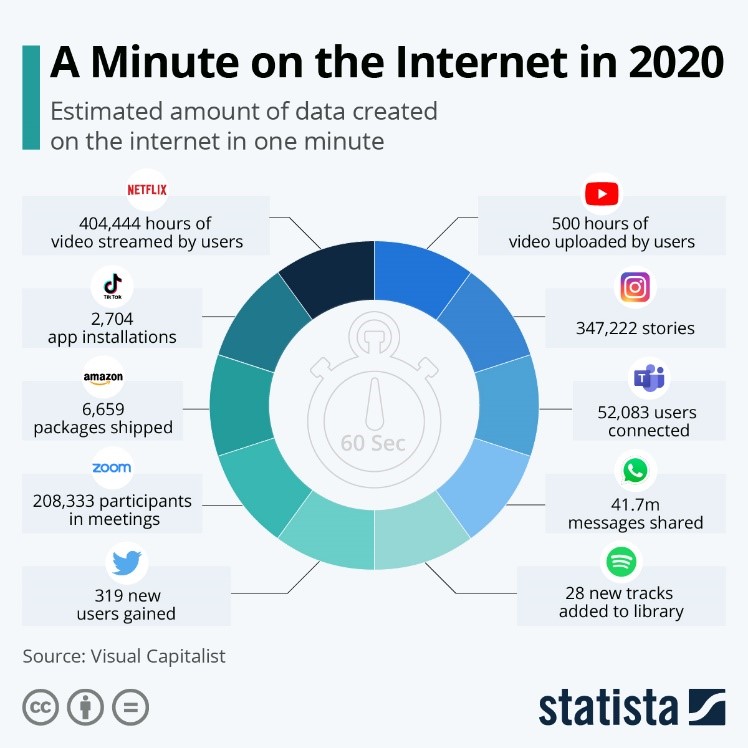
3 Questions CIOs Should Ask Themselves About Location Intelligence

Like many of you, I spent a significant amount of time looking at election maps of the US as the 2020 voting results came in. Closely following the avalanche of data and statistics as the counts and percentages changed. Regardless of your political persuasion, it was an election that presented many twists and turns, not least the number of people who voted – 146 million, the highest ever.
Evolving maps covered with red and blue were continually being presented as the votes were presented. Broadcasters used statistics to predict what might happen next, explaining the demographical differences between states, cities, and counties. Providing context to the incoming data and decisions.
They say a picture paints a thousand words and, in this case, the simple change between the map colours signified the potential for significant change to the life of US citizens. The importance of location intelligence and being able to derive insight from location data was truly being witnessed by the masses. Not only was it critical to informing the commentary undertaken by the news anchors, but it also shaped where channels placed their teams in the build up to the election.
This ultimately was a reminder that ‘everything happens somewhere’, and everything can be attached to a point in time and space, whether it’s an election or whether it’s a telecommunications company looking to understand where to target new subscribers. The challenge for organisations is understanding the role of location data and how it informs actionable insights through location analytics. The task of discerning the role of this valuable data increasingly sits with the CIO – for every CIO, there are three key questions that should be considered when it comes to location intelligence:
1: How does location intelligence fit within your data strategy?
This should be the first question asked. Data is your organisation’s fastest growing asset, but it’s also one of the biggest areas of concern. Customer and asset data are a cornerstone of a data strategy, and sadly gaining location context from this data is too often an afterthought.
The chart below from Statista shows you how much data is being created on the internet every 60 seconds. Put that into the context of your business, how much data is your organisation creating? How much of that data is or can be spatially referenced? Or how much of that data is stored in silos?

In the world of location intelligence, data growth is exponential. The growth of location intelligence in the government, transportation, retail, insurance and telecommunications sectors, is testament to this as more organizations are using location analytics as a key part of their decision-making process. However, as data usage and consumption increases, so does the challenges of managing the data.
A report by EY found that 81% of organizations support the notion that data should be at the heart of everything they do, but the vast majority continue to keep data in silos. Not knowing what data you have and not understanding its value, will cost your organisation.
Within this context, the value of location data and location intelligence is often misunderstood, often pushed off as “it’s a map”, but the power of location data can help you and your organisation unleash a tidal wave of new intelligence and analysis, not previously explored.
It was once suggested that 80% of an organisations data can be spatially referenced and depending on your business focus that could be true. What we do know is that location intelligence is foundational to your business data, informs opportunity and reduces risk, and as such should play a critical role in your data strategy.
2: How does it enable your customer journey?
I want you to play along with me here, I want you to think about your last online, telephone call, or in person customer service experience. It might be renewing your home or car insurance, or buying a product from an online store, it might be driving to your favourite coffee shop. I want you to now think about that experience and how that process would work if you didn’t use location insight.
How would that call with the renewals team go…
- Agent – Good morning, how can I help you today?
- You – Good morning, I’d like to renew my insurance.
- Agent – Very good, please can I take your name?
- You – Yes, its Joe Bloggs.
- Agent – And your zip code and first line of your address?
Or the online order…
- Please enter delivery and/or billing address
Without an address you’ll struggle to progress in both scenarios.
Consider your own drive to the local coffee shop. While you might not use an actual spatial reference to get there, you are using something better, your own in-built GPS. You know the location, the drive, the short cuts, how busy the traffic will be on Main Street or the best place to park. All this location data is giving you the context to make the most accurate decisions. How many times have you set off for the office and arrived to think – ‘I can’t remember the drive in…’ I give you your own built-in location intelligence.
Appreciation of how the world interacts with location fundamentally enables you to optimize your customer journeys, and through confidence in your addressing, routing, and spatial processes, enhances your decision-making process.
Watch our webcast
Introducing Spectrum 2020.1: Experience Enhanced User Experience, Interoperability, and Accuracy
Understanding the role of location data and how it informs actionable insights through location analytics is a challenge for many organisations. Watch this webcast to learn more about the most recent enhancements to Spectrum Spatial and other key products within the Locate portfolio.
3: How do you ensure the integrity of data is being considered when it comes to location intelligence?
When I first started on my journey of GIS discovery, I had just left school at 16 and started working for my local council, in the Grounds Maintenance Administration team.
One of my first jobs was to go out to local areas, parks, graveyards, fields, housing estates, etc. and using my trusted trundle wheel. I would walk the perimeter and mark it down on paper maps, ready to re-enter the details into the CAD system back in the office. In my 17 years I progressed within the council, doing different roles along the way, from marketing assistance to ICT systems manager, but one constant through that journey was location data, but more specifically, the understanding of how this data is critical to an organisations decision making – Location Intelligence really mattered.
The biggest challenge throughout my journey, was getting people to fully understand the importance of location. I am sure many GIS colleagues have had that same battles. Most importantly, I learnt that the integrity of spatial data, including the consistency, accuracy, and context of this data, can mean the difference between success and failure.
Unfortunately, I’ve seen multi-million-pound building projects using base maps that were 10 years old, missing vital changes and information, I’ve seen single customer view projects underestimating the need for valid quality addresses, multiple copies of the same spatial data on different servers and machines – 29,000 Tab Files in fact.
However, I have seen great successes too; like the council obtaining funding to help the most vulnerable in the community, by demonstrating the relationships between customer location and service delivery. Organisations sharing data with key partner agencies to ensure the right infrastructure assets (roads) get gritted, meaning that the ambulance can get to the right location safely to take a transplant patient to hospital – real problems, impacting real lives.
Understanding the what, who, where and when of data is a fundamental part of an organisation’s data integrity strategy. Many years ago, a well-known GIS vendor focused on the need for a central spatial data repository, and adoption of a proprietary file format (they still do). I was never a fan of this approach, as it never really helped create the fluidity of data usage needed within an organisation, but it did add complexity and costs. Today, CIOs need to take a holistic data-driven approach and remove barriers – crucially they need to be able to trust their data, and its never been so true when it comes to location data.
Spectrum Spatial from Precisely helps you to break down spatial data silos and achieve enterprise location intelligence by integrating, managing, analysing, and extending the value of location data.
To learn more about the most recent enhancements to Spectrum Spatial and other key products within the Locate portfolio, watch this webinar.


